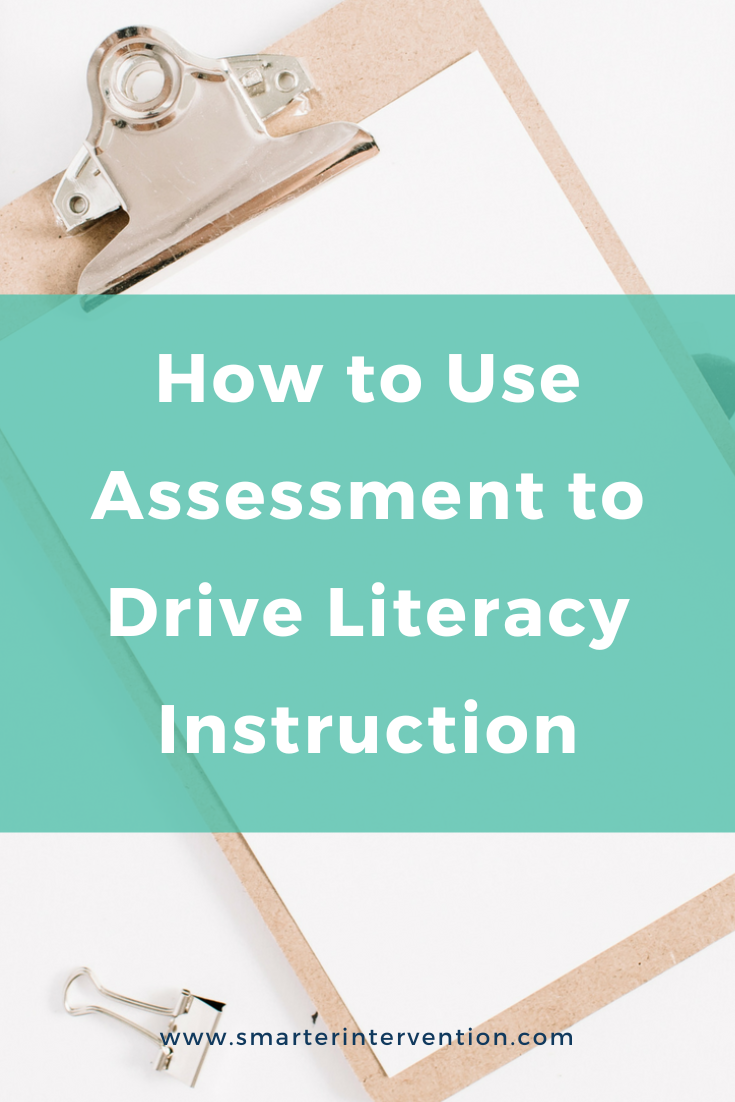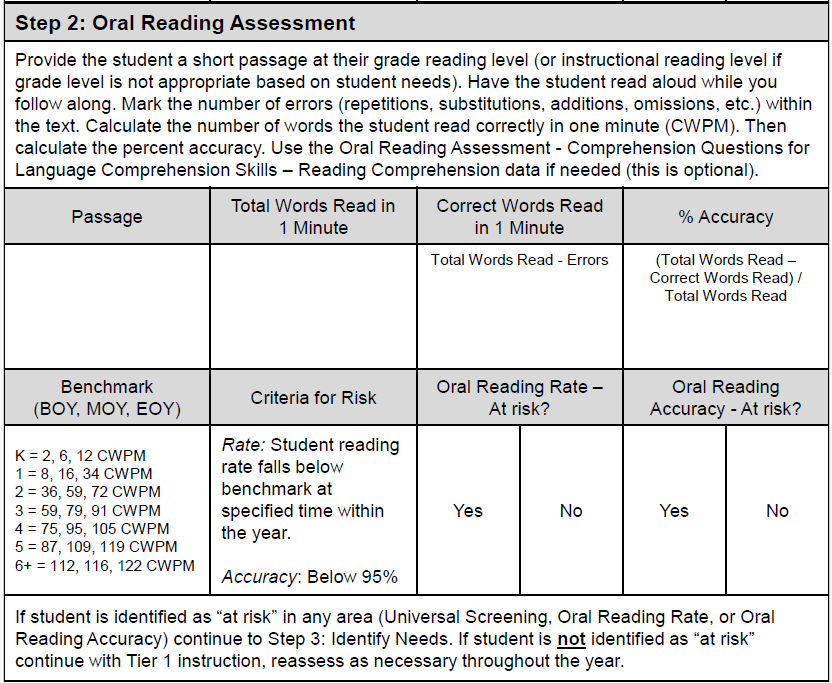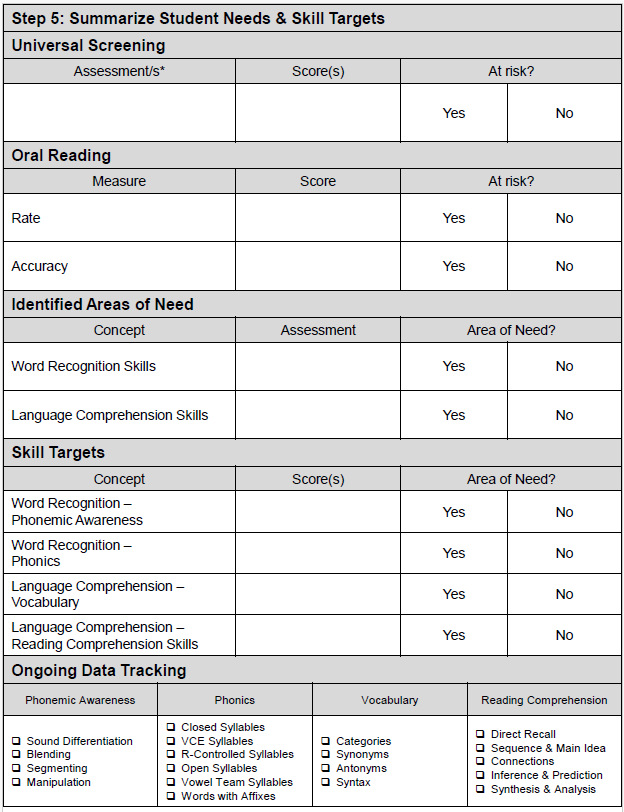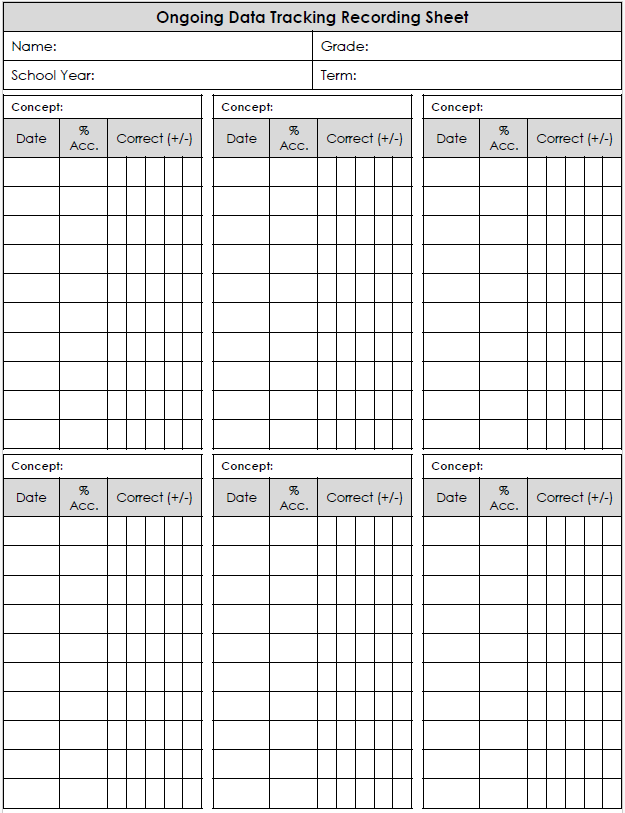How to Use Assessment to Drive Literacy Instruction
Stop guessing. Start targeting.
If you've ever looked at a mountain of assessment data and thought, “What am I supposed to do with all of this?” You’re not alone.
Too often, educators are handed results from screeners, benchmarks, or progress monitoring tools, but still feel uncertain about what that data actually means for instruction.
Assessment should guide instruction, not create more confusion. Which, let’s be honest, more often than not, that’s exactly what it does.
We use a 7-step process to assess students’ needs and make instructional decisions regardless of which setting we’re working in.
Let’s walk through what that looks like.
Step 1: Screen for Risk
Use universal screeners to flag students who may be struggling.
Tools like iReady, AIMSweb, or DIBELS give you a wide-lens view: Is there something here we need to look into?
Step 2: Observe Real Reading
Screening data only tells part of the story. We also listen to students read aloud to catch:
Word-level hesitations
Guessing patterns
Fluency breakdowns
Frustration signals
This helps you contextualize the numbers and see what’s really going on. We use a 1-minute oral reading assessment presented at the student’s grade level and get a measure of Correct Words Per Minute and measure that benchmark against Hasbrouck & Tindal Reading Fluency Norms.
Step 3: Identify the Area of Need
Once you know a student is struggling, ask:
Is this a word recognition issue?
A language comprehension issue?
Or both?
Using the Simple View of Reading and Scarborough’s Rope, we can break down what students need and avoid one-size-fits-all intervention.
We use a quadrant model to help sort student needs (and later, groups) based on their profile.
Step 4: Dig Deeper
This is where we get specific.
You’ll want to identify which skills within word recognition or language comprehension are breaking down. For example:
In word recognition: phonological awareness or phonics?
In comprehension: vocabulary, syntax, or connected text?
We often use curriculum-based screeners at this stage to get a clearer picture of the “skill tower.”
Step 5: Summarize
Now you synthesize what you’ve learned into a simple, clear statement:
“This student needs support with multisyllabic decoding and vocabulary development.”
This becomes your instructional plan and can also guide IEP goals, small group design, and team collaboration.
We use a summary sheet like this one to help compile all of the scores into one place so that we can create that simple, clear statement. This is also a great way to share with families to help them understand the specific needs and what you will be tracking to make sure the student makes progress toward his or her specific learning goals.
Step 6: Group by Need
You don’t need to reinvent your entire schedule. Instead, group students by skill need, not just grade level or test score.
Our quadrant model helps place students into flexible groups for targeted intervention.
Step 7: Monitor Progress
Assessment doesn’t stop after grouping.
You’ll want to track just a few focused skills (using either curriculum-based checks or binary tracking systems) to ensure students are making gains. If they’re not? You adjust.
The goal here isn’t more data. It’s smarter data use.
When we work with students, we use a data sheet like this one to monitor progress. We include the specific concepts that student needs to focus on for their instructional period (e.g., decoding R-controlled syllables, decoding vowel team syllables, producing synonyms, and making inferences/predictions). Then, in our lessons, we provide opportunities (trials) for the student to respond to. If they get it right, they get a +; if they get it wrong, they get a -, and we can track overall progress and growth in that way.
Putting It All Together
This 7-step process is all about clarity, not more paperwork, more testing, or just generally more to do. When we use assessment to truly understand our students’ needs, we can make confident instructional decisions that actually make an impact for our students.
You don’t have to implement everything overnight. Start with the steps that make the most sense for your role, your setting, and your students, and build from there.
Whether you're in a classroom, leading a small group, or supporting students through IEPs or private instruction, this framework will help you use the data you have to drive your instruction.
Assessment is one of the most powerful pieces of the your literacy instruction, it ensures that it is targeted and effective.
If you want to see how assessment fits into the bigger picture of structured literacy, join our Free Delivering Effective Literacy Intervention Training (elementary and secondary versions available). You’ll see exactly how to connect assessment with scope, sequence, and routines.
👉 Learn more about the free training options here!
Already know you need tools to make assessment and data collection simple?
Our Data to Decisions Spotlight Training takes a closer look at the exact process and templates we use to move from assessment → small group planning.
👉 Check out the Spotlight PD training here!






